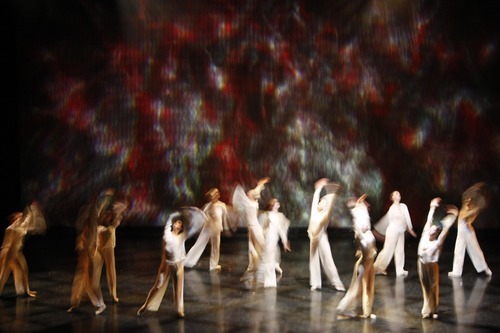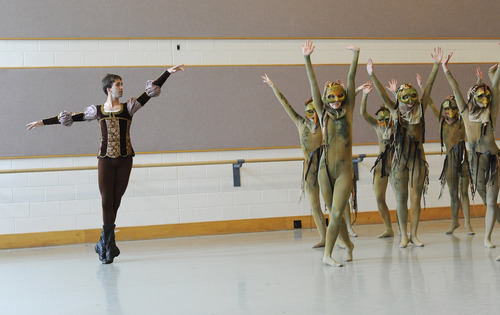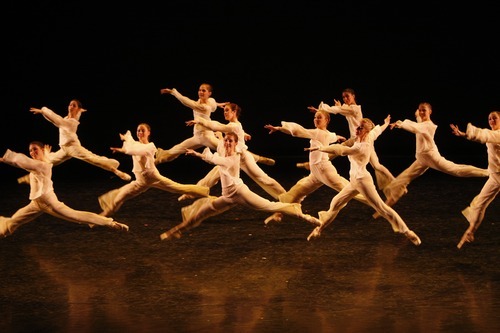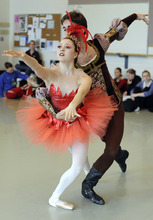This is an archived article that was published on sltrib.com in 2011, and information in the article may be outdated. It is provided only for personal research purposes and may not be reprinted.
The University of Utah's ballet program, one of the oldest in the country, has been placed in receivership and its graduate program is no longer accepting new students.
U. senior vice president David Pershing has asked law professor Linda F. Smith to run the program after ballet faculty were unable to agree on who to hire to fill the vacant department chair, despite a year-long search. And the program is short three tenure-track faculty because there is chair to hire them.
Officials emphasize that undergraduates will experience no disruption and public performances will continue as usual, beginning Oct. 6.
Smith is an expert in building consensus, and that's what the 50-year-old ballet program needs, according to Brent Schneider, associate dean of the College of Fine Arts and a professor of modern dance.
Smith, who should not be confused with modern dance professor Linda C. Smith, served as a Academic Senate president in the late 1990s and helped craft faculty policies. Pershing asked her to manage the department for the next two years.
This is the second program U. administrators have placed in receivership this year. The Middle East Center, which was established about the same time as the ballet program, was also fractured by hiring disputes among faculty. But the MEC receivership was triggered by a finding of financial mismanagement.
For the past three years, after the resignation of department chair Carol Iwasaki, the ballet program was run by retired professor Bene Arnold, who recently moved to St. George after purchasing a home there. Last year, as Arnold's departure loomed, faculty struggled to agree on who to hire to fill her leadership role. A national search yielded 40 candidates and four finalists were selected, according to Smith. But faculty could not agree, so the dean of fine arts, Raymond Tymas-Jones, chose one. The hire was blocked by the Academic Senate.
"The candidate would have been an amazing addition, but there was a lack of consensus," said Schneider. Part of the leadership quandary was related to Tymas-Jones' insistence that the ballet department report learning outcomes on top of its traditional role as a conservatory, where students learn how to perform.
"That conservatory model has to change as well," Schneider said. "Some of the difficulties in the conversation have been matching past practices with current expectations."
The most senior of the department's three remaining professors, Richard Wacko, did not return a phone call requesting comment.
The U.'s ballet department is among the nation's oldest university ballet programs, launched in 1951 by choreographer Willam F. Christensen, a Utah native who founded the San Francisco Ballet Company. The program is housed in the U.'s Alice Sheets Marriott Center for Dance, where Utah Ballet performs.
The department attracts undergraduates from around the nation, with 100 currently in the program, along with another 12 graduate students working on a master's of fine arts. Alumni include Dennis Sonntag, director of dance for the National Endowment for the Arts; Chinese dancer Jiang Qi, now artistic director of Dance China NY; and Victoria Morgan, artistic director of the Cincinnati Ballet.
The department is also one of the few that is separate from non-ballet dance programs. The U.'s modern dance and ballet programs were established around the same time, merged for a while, but separated at least 30 years ago, according to Schneider. He does not anticipate the two will be merged again. Instead, the dean's office hopes to have a hire a new chair and restore the MFA program within the next two to three years. Officials prefer having the chair on board to help select new professors, but because the program is so short-handed, Smith may move forward with faculty hires.
In the meantime, she is increasing the teaching loads of some part-time adjuncts to 30 hours a week.
U. students, called "aspirants," participate in Ballet West productions and the company's artistic staff have taught at the U. as adjuncts, according to Peter Christie, who runs Ballet West's education programs.
"For us, it's really important to have a connection with the ballet department," Christie said. "The university and the ballet department are the early pioneers of bringing the arts in a structured level to our community. If you lose that legacy, to regroup and recreate is going to be very difficult. We are watching very carefully."















